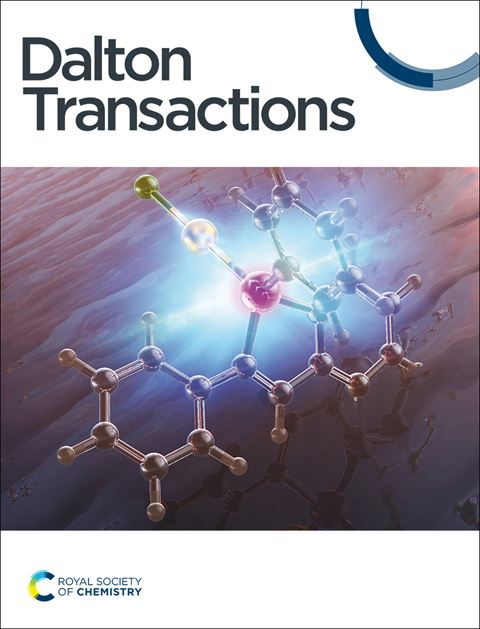Supramolecular bidentate rhodium(I) or iridium(I) phosphine and oxazoline amino acid bioconjugates as selective catalysts for enantioselective reactions
IF 3.5
3区 化学
Q2 CHEMISTRY, INORGANIC & NUCLEAR
引用次数: 0
Abstract
This publication describes monodentate phosphine and oxazoline ligands attached to an amino acid ester and the application of their supramolecularly assembled rhodium(I) or iridium(I) complexes in asymmetric catalysis. The major feature of these complexes is the transmission of chirality from distant hydrogen bonded amino acids to the prochiral catalytic metal center ("backdoor induction"). The in situ generated homoleptic and heteroleptic rhodium(I) or iridium(I) precatalysts were studied by NMR, UV-VIS and CD spectroscopy as well as X-ray single crystal diffraction. In asymmetric hydrogenation of methyl α-acetamidocinnamate, rhodium(I) and iridium(I) complexes afforded complete conversions with enantioselectivities up to 85 %, while iridium complexes proved to be more sensitive to the variation of reaction conditions, including catalyst loading, metal to ligand ratio and temperature. The hydrogenation of four other dehydroamino acid substrates resulted in similar conversion and selectivity as obtained with methyl α-acetamidocinnamate. The influence of the phosphine/oxazoline heteroleptic mixtures in catalysis was studied using both rhodium(I) and iridium(I) complexes. Finally, a homoleptic phosphine rhodium(I) complex was successfully applied in asymmetric hydroformylation of styrene and 1-octene with complete conversions and selectivity up to 40% e.e. for the branched styrene product.超分子双叉铑(I)或铱(I)膦和噁唑啉氨基酸生物共轭物作为对映体选择性反应的选择性催化剂
本出版物介绍了与氨基酸酯相连的单齿膦和噁唑啉配体,以及其超分子组装的铑(I)或铱(I)配合物在不对称催化中的应用。这些配合物的主要特点是手性从远处氢键氨基酸传递到原手性催化金属中心("后门诱导")。研究人员通过核磁共振、紫外可见光谱、CD 光谱以及 X 射线单晶衍射对原位生成的同性和异性铑(I)或铱(I)前催化剂进行了研究。在α-乙酰氨基肉桂酸甲酯的不对称氢化反应中,铑(I)和铱(I)配合物能实现完全转化,对映体选择性高达 85%,而铱配合物对反应条件的变化(包括催化剂负载、金属与配体的比例和温度)更为敏感。对其他四种脱氢氨基酸底物进行氢化时,获得了与α-乙酰胺肉桂酸甲酯类似的转化率和选择性。使用铑(I)和铱(I)络合物研究了膦/噁唑啉杂环混合物在催化过程中的影响。最后,在苯乙烯和 1-辛烯的不对称加氢甲酰化反应中成功地应用了同性膦铑(I)络合物,其转化率完全,支链苯乙烯产物的选择性高达 40%。
本文章由计算机程序翻译,如有差异,请以英文原文为准。
求助全文
约1分钟内获得全文
求助全文
来源期刊

Dalton Transactions
化学-无机化学与核化学
CiteScore
6.60
自引率
7.50%
发文量
1832
审稿时长
1.5 months
期刊介绍:
Dalton Transactions is a journal for all areas of inorganic chemistry, which encompasses the organometallic, bioinorganic and materials chemistry of the elements, with applications including synthesis, catalysis, energy conversion/storage, electrical devices and medicine. Dalton Transactions welcomes high-quality, original submissions in all of these areas and more, where the advancement of knowledge in inorganic chemistry is significant.
 求助内容:
求助内容: 应助结果提醒方式:
应助结果提醒方式:


